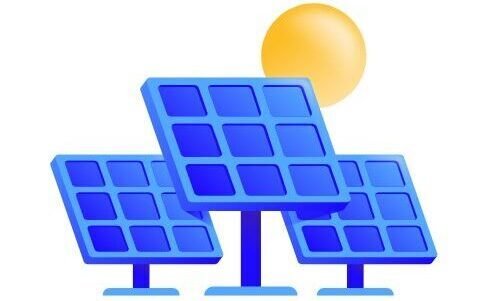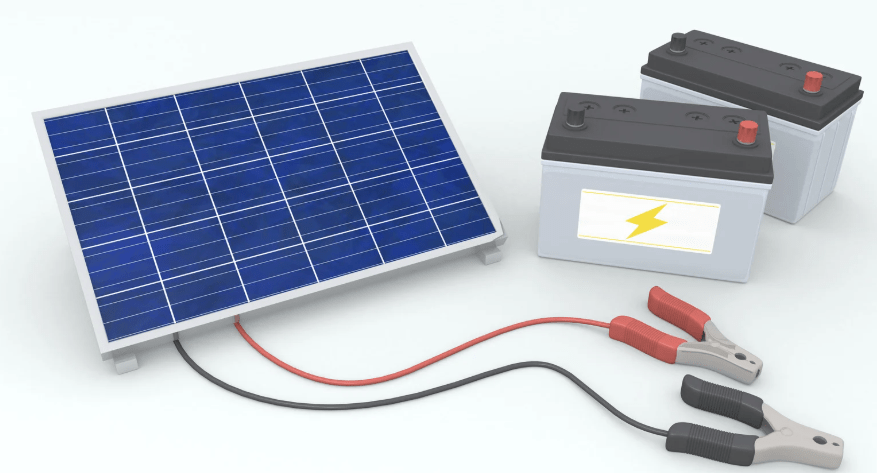Introduction
In today’s world, energy independence is more than a luxury—it’s a necessity. Between rising utility prices and growing concerns about grid stability, more homeowners and businesses are turning to solar energy solutions. But adding battery storage to a solar system takes things to a whole new level.
Pairing solar with battery storage doesn’t just increase reliability—it hands control back to the user while unlocking serious financial savings. This article explores how solar-plus-storage systems empower consumers, cut costs, and shape the future of personal energy management.
Why Solar Alone Isn’t Always Enough
The Intermittency Issue
Solar power is clean and renewable, but it comes with a catch: it’s intermittent. Panels only generate electricity when the sun is shining. That means energy production drops at night and during cloudy days—precisely when demand can still be high.
Feeding the Grid Isn’t Always Profitable
In many areas, net metering allows homeowners to feed excess solar energy back into the grid. However, compensation rates are shrinking. In some states, users receive only a fraction of the retail electricity rate for their exported power. As a result, selling excess energy back to the grid no longer guarantees savings.
The Value of Battery Storage
Store Now, Use Later
Adding a battery to a solar setup allows users to store unused solar power generated during the day and use it when they need it most—like at night or during peak rate hours. This simple shift dramatically increases the efficiency and value of solar systems.
Energy on Demand
With a solar-plus-battery system, users aren’t tied to the utility schedule. They can decide when to draw from solar, when to discharge the battery, and when (or if) to use grid power. This flexibility is where user control meets energy freedom.
User-Control: The Real Game Changer
Monitor, Manage, Optimize
Modern solar storage systems often come with intuitive apps and dashboards. Users can:
- Monitor real-time energy production
- Check battery charge levels
- Track energy consumption
- Set usage priorities (solar first, battery second, grid last)
This level of visibility helps users make smarter choices about energy usage, effectively becoming their own utility manager.
Peak Shaving and Load Shifting
Battery storage also allows for peak shaving, a strategy that reduces grid use during times of high electricity rates. Instead of buying expensive power at 6 PM, a battery system can discharge stored solar power—leading to significant savings on utility bills.
Financial Benefits of Solar + Battery Pairing
Lower Energy Bills
By reducing grid dependence, homeowners can slash their energy costs—sometimes by up to 70% depending on the utility rate structure and local solar incentives.
Time-of-Use (TOU) Optimization
In many states, utility rates vary throughout the day. This is known as Time-of-Use pricing. Batteries allow users to draw stored energy during high-rate periods and recharge during cheaper hours or via solar—maximizing savings while minimizing cost.
Backup Power = Avoided Losses
Beyond bill savings, batteries provide backup power during blackouts. This is especially critical in areas prone to natural disasters or rolling blackouts (e.g., California, Texas). Avoiding food spoilage, lost work hours, or HVAC downtime can equate to hundreds or even thousands in prevented losses.
Enhancing Resilience & Independence
Grid Outage? No Problem.
With a battery in place, the lights stay on—even if the neighborhood goes dark. Systems with islanding capabilities can automatically disconnect from the grid during outages and continue to operate independently.
This means:
- Refrigerators stay cold
- Critical medical equipment stays running
- Security systems remain active
- Homeowners maintain normalcy during crises
Emergency Preparedness
Many families are now viewing solar-plus-storage systems as part of their disaster preparedness plan. Unlike generators, batteries are silent, emission-free, and recharge daily via solar energy.
Environmental Impact
Maximize Clean Energy Use
Without a battery, surplus solar energy often goes back to the grid where it may not be used efficiently. By storing and using your own power, you ensure more solar energy displaces fossil-fuel-based electricity, increasing your home’s sustainability footprint.
Reduce Grid Load
By reducing demand on centralized power systems—especially during peak hours—solar-plus-storage systems help decrease the strain on the electrical grid, supporting a more stable and sustainable energy network.
How the Tech Works Together
Inverter Integration
In a solar-plus-storage setup, a hybrid inverter controls both the solar and battery operations. It:
- Converts DC power from panels to AC for home use
- Manages when to charge or discharge the battery
- Coordinates energy flows between solar, battery, and grid
Some systems use AC-coupled setups (separate inverters for solar and battery), while newer options favor DC-coupled systems for greater efficiency.
Smart System Management
Today’s storage systems—like Tesla Powerwall, LG Chem, or Enphase IQ—come with AI-driven management features. These allow for automatic optimization based on weather forecasts, consumption patterns, and utility pricing changes.
Incentives & Financing
Federal Investment Tax Credit (ITC)
As of 2025, homeowners can claim up to 30% of the total cost of their solar-plus-storage system through the federal ITC. This significantly reduces upfront costs.
Local Rebates and Incentives
Depending on your location, there may be state or utility-level rebates for battery systems. For example:
- California’s SGIP program
- Hawaii’s Battery Bonus
- Massachusetts’ SMART program
These programs can save thousands and even cover up to 60–70% of battery installation costs.
Financing Options
From solar loans to power purchase agreements (PPAs), flexible financing has made it easier than ever to go solar with storage—often with no money down and monthly payments lower than your old energy bill.
Challenges and Considerations
Upfront Cost
While prices have dropped, battery systems still add $8,000–$15,000+ to a solar installation. However, with incentives and long-term savings, most homeowners see a positive ROI within 6–10 years.
Space and Siting
Batteries require appropriate installation space, ventilation, and in some cases, permits or inspections. It’s important to work with a licensed installer who understands local codes.
Lifespan and Maintenance
Most lithium-ion batteries last 10–15 years and come with warranties covering 6,000+ cycles. While maintenance is minimal, performance can degrade slightly over time, especially in extreme temperatures.
Future Trends in Solar + Battery Pairing
Vehicle-to-Home Integration
Electric vehicles (EVs) like the Ford F-150 Lightning now offer bidirectional charging, meaning they can act as backup batteries for your home. This convergence of solar, battery, and EV tech points to a more dynamic, user-controlled energy future.
Virtual Power Plants (VPPs)
Some utilities now invite homeowners to join Virtual Power Plants, aggregating stored energy from thousands of homes to create a decentralized energy reserve. In return, users get paid for contributing to grid stability.
AI and Machine Learning
As more systems become “smart,” AI algorithms will begin making even more precise decisions about when to charge, discharge, or sell energy—maximizing user savings with minimal input.
Conclusion
Pairing solar with battery storage transforms a home from a passive energy consumer into a smart energy hub. With greater control over production and usage, homeowners aren’t just saving money—they’re actively shaping their energy future.
From cutting costs and avoiding outages to reducing environmental impact and unlocking independence, solar-plus-storage isn’t just a trend—it’s a smart investment in control, savings, and sustainability.

